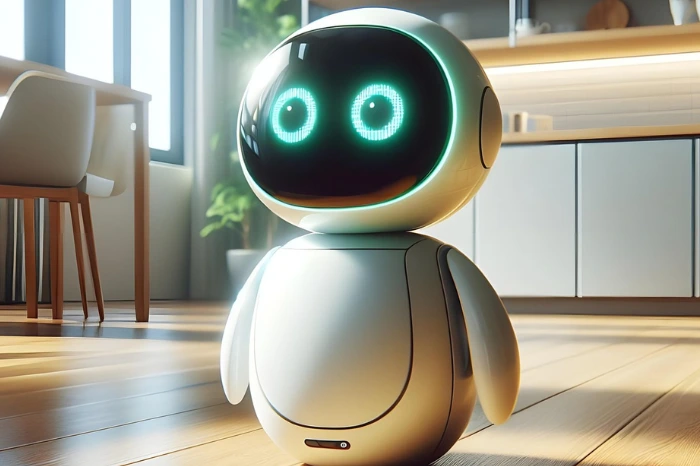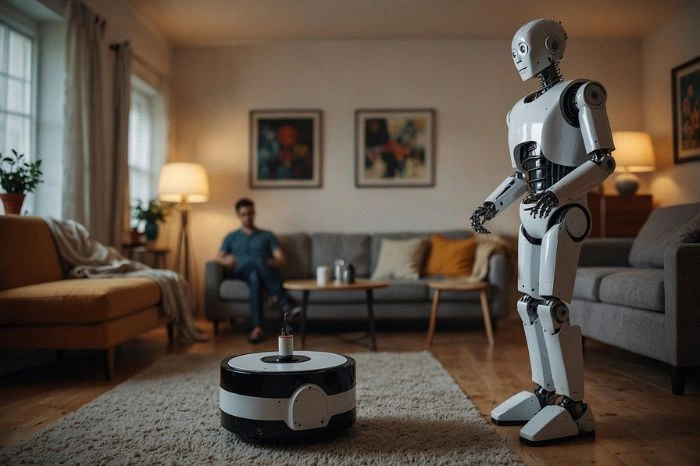Robots are cool. But are they all good? Not exactly. They’re transforming industries, making things faster, cheaper, and more efficient. They don’t sleep, don’t slack, and don’t call in sick. But they’re also replacing jobs, guzzling power, and lacking human smarts. As AI and automation push forward, robots are showing up everywhere—from factories to hospitals to restaurants. Are they our future coworkers or the beginning of a human-free workforce? This breakdown dives deep into the pros and cons of robots, so you can decide whether they’re a blessing, a curse, or a bit of both.
Pros and Cons of Robots: Will They Make Our Lives Better or Worse?
The Robotics market is set to experience significant financial growth. In 2025, it is projected to generate US$50.80 billion in revenue. This figure is expected to surge to US$73.01 billion by 2029, reflecting a robust annual growth rate (CAGR) of 9.49% from 2025 to 2029.
The Good Stuff of Robots

1. Quality? Control? Perfection? You got it!
Robots do things better. Machines running on AI, IoT, and fancy tech like 3D printing make production smoother, more accurate, and, well, just downright reliable. Errors are almost none. Consistency is through the roof. In addition, real-time tracking helps prevent breakdowns before they even happen. Think of it as a superpower for factories. This is one of the key benefits of robots.
2. Workaholics of the Future
Robots don’t sleep. No coffee breaks, no union meetings, no sick days. Just pure, uninterrupted work. That means production moves faster. More products, less downtime, bigger profits. Round-the-clock efficiency makes them an absolute game-changer in manufacturing. These advantages of robots are clear.
3. Safety First!
A dangerous job? Give them to the robots. Workers don’t have to risk their lives in hazardous environments. Remote monitoring lets supervisors keep an eye on things from a safe distance. Fewer workplace injuries, more happy employees. Simple as that. This is why robots are good in dangerous situations.
4. Robots Don’t Ask for Raises
Let’s be real—humans are expensive. Salaries, benefits, paid vacations—it adds up. Robots cost upfront, but over time, they pay for themselves. The savings can go into hiring people for higher-skilled jobs like programming, engineering, or maintenance. Another of the many advantages of robots.
5. “Made in America” Sticks Around
Are robots job-stealers? Maybe. But they also help keep manufacturing locally. Companies don’t have to outsource as much when automation makes domestic production cost-effective. Instead of losing jobs overseas, we get a workforce where humans and robots work side by side.
The Not-So-Great Stuff of Robots

1. The Job Stealers
Let’s not sugarcoat it. Robots replace people. A machine that never messes up, never needs sleep, and never takes a paycheck is hard to compete with. Whole industries have seen jobs vanish because robots can do them faster, cheaper, and with fewer errors. This is one of the main disadvantages of robots.
2. Power-Hungry Monsters
Electricity guzzlers—that’s what robots are. Running them costs a fortune. And unless the world shifts to greener energy, their hunger for power means more pollution, more carbon footprints, and more headaches for the planet.
3. Not as Smart as You Think
A robot is only as good as its programming. They don’t think. Don’t adapt. They follow code—nothing more. Until AI catches up through ground-breaking projects like DeepSeek (and that’s a whole other conversation), robots will always be limited to doing exactly what they’re told. No creativity, no problem-solving, no instincts.
4. One-Trick Ponies
Right now, robots shine in factories, hospitals, research labs, and the military. Outside of those areas, they’re kind of useless. Sure, home robots exist, but they’re not exactly game-changing. They vacuum. They fetch stuff. But until they’re smart enough to do more, their real-world impact is limited.
5. The Price Tag Problem
Investing in robots isn’t cheap. Companies have to sink big bucks into them before seeing any returns. Sure, they save money in the long run, but not everyone can afford the initial cost. Plus, financial risk is always lurking—what if the investment doesn’t pay off?
Robots + AI: Where They’re Making Waves

- Manufacturing: Robots keep factories running 24/7. Assembly lines, quality control, logistics—robots handle it all. The insane precision is one of the benefits of industrial robots.
- Healthcare: Robotic-assisted surgeries are here. More accuracy, less invasive procedures, faster recovery. AI-powered diagnostics are pushing medical science forward.
- Agriculture: AI-driven bots help farmers with crop monitoring, harvesting, and even planting. Less waste, more efficiency. One example is the RB-VOGUI, which is being used in vineyards for precision farming.
- Automotive Industry: Robots weld, paint, and assemble—you name it. They’re the backbone of modern car manufacturing, handling the most repetitive, high-precision tasks.
- Service & Hospitality: Customer service bots? Yep, they exist. From hotels to restaurants, robots like PLATO handle cleaning, food service, and guest interactions. Cheaper labor and better service.
The Verdict
Robots are game-changers, no doubt. But they come with baggage. More productivity and more efficiency, but also job losses, high costs, and social risks. As they continue to evolve, society will have to figure out how to balance the advantages and disadvantages of robotics. Are they the future? Absolutely. But whether that future is bright or bleak, that’s still up for debate.



